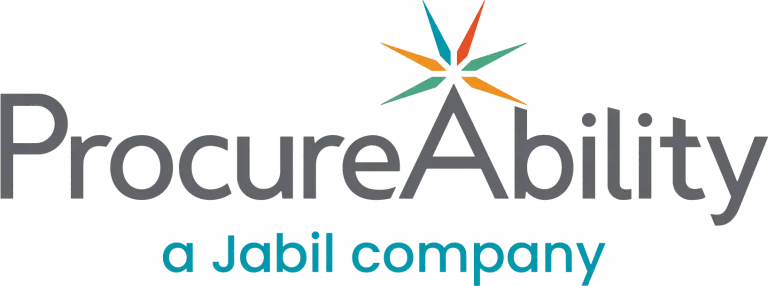
In today’s fast-changing world, procurement teams face constant challenges—from natural disasters and political shifts to market volatility and sudden disruptions. Building resilience in procurement and supply chains has become essential to keeping operations steady and supporting long-term growth.
A strong risk management framework helps organizations navigate uncertainty. It provides a clear structure to identify, assess, and mitigate risks throughout the procurement process. When companies adopt flexible, well-designed procurement strategies within this framework, they can manage risks more effectively, improve efficiency, and maintain supply continuity even when the future feels uncertain.
This blog explores practical short- and long-term actions that help procurement teams turn challenges into opportunities and emerge stronger.
Navigating Uncertainty: The Role of a Procurement Risk Management Framework
Procurement teams play a central role in spotting risks and vulnerabilities across suppliers and internal operations. A comprehensive risk management framework supports this effort by assessing supplier reliability, delivery capability, financial stability, and geographic exposure. It also examines internal elements like inventory management, order fulfillment, and communication processes.
By identifying weak points early and creating contingency plans, procurement can minimize disruptions and maintain business continuity. These actions include securing backup suppliers, building safety stock, and defining clear communication protocols for rapid response.
A strong framework enables teams to act quickly and confidently when disruptions occur. It transforms procurement from a reactive function into a proactive partner focused on resilience and long-term success.
Short-Term Actions to Secure Your Supply Chain and Operations
When disruptions hit, quick action is critical. Procurement leaders must engage suppliers directly to assess capacity, delivery timelines, and potential risks. Open communication helps identify bottlenecks early—whether from production delays, transport issues, or material shortages—and gives a clear picture of vulnerabilities.
This dialogue also opens the door to new sourcing opportunities. Companies can evaluate regional suppliers that offer faster delivery or greater reliability, providing backup options when traditional routes fail. A diversified supplier base reduces dependence on a few key sources and strengthens overall resilience.
Organizations should also evaluate how external constraints affect internal operations, such as production, inventory, and customer fulfillment. Analyzing supply and demand data reveals where the biggest risks lie. Aligning with operations, sales, and finance ensures everyone shares the same priorities. This cross-functional approach helps procurement design fast, targeted responses that stabilize the business.
The Importance of Supplier Diversification and Alternative Sourcing
Relying heavily on just a few suppliers (or concentrating sourcing within a single geographic region) creates significant vulnerabilities for any organization. If those suppliers encounter issues such as production delays, natural disasters, political instability, or transportation disruptions, the entire supply chain can be jeopardized. This overdependence can lead to costly delays, lost revenue, and damage to customer trust.
To mitigate these risks, procurement teams should prioritize supplier diversification. This means expanding the supplier base across multiple regions and developing relationships with alternative or backup suppliers. Geographic diversification helps spread risk so that if one region is affected by unforeseen events, others can step in to keep the supply chain moving smoothly. Beyond geographic considerations, diversification also involves evaluating suppliers based on their capabilities, financial stability, and responsiveness, ensuring that backups are viable and ready to support critical needs when necessary. This multi-tiered approach creates flexibility, allowing procurement to pivot quickly in response to disruptions.
By building and maintaining a broader supplier network, procurement teams improve supply chain agility and resilience. This not only helps maintain continuity during disruptions but can also drive competitive advantages, such as faster response times, better negotiation power, and access to innovation from diverse markets.
Conducting Internal Evaluations to Boost Operational Efficiency
Resilience in procurement doesn’t come from external factors alone; it also relies heavily on the strength of internal operations. Conducting thorough evaluations of key areas, such as procurement processes, inventory management, and demand planning, helps uncover inefficiencies and hidden vulnerabilities that could amplify the impact of supply disruptions. For example, outdated procurement workflows might slow response times, while poor inventory visibility can lead to stockouts or overstocking. Similarly, inaccurate demand forecasting can cause mismatches between supply and customer needs, increasing costs and operational strain.
By gaining a clear understanding of how different teams and functions are affected by supply chain challenges, organizations can identify pain points and areas for improvement. This cross-functional insight enables procurement leaders to make more informed decisions, prioritize resources effectively, and develop sharper, more targeted response strategies.
Embedding Emergency Planning into Procurement Practices
Long-term procurement resilience depends on embedding emergency preparedness and business continuity planning directly into everyday procurement workflows. This proactive approach starts with incorporating comprehensive risk assessments into every stage of supplier selection and management. Rather than simply choosing suppliers based on cost or quality alone, procurement teams evaluate potential risks such as financial instability, geopolitical exposure, environmental factors, and operational reliability.
Contracts play a key role in safeguarding supply continuity. Including contingency clauses, such as alternative supply commitments, flexible delivery terms, or penalties for non-performance, helps protect the organization from unforeseen disruptions. These contractual safeguards create clear expectations and provide a framework for managing risks when they arise.
Furthermore, effective resilience planning requires that procurement integrates potential disruption scenarios into budgeting and sourcing decisions. This means allocating resources not only for day-to-day operations but also for emergency stock, supplier diversification, and rapid response capabilities. It also involves balancing cost efficiency with risk mitigation to ensure the supply chain remains agile without sacrificing financial discipline. Establishing clear, well-communicated protocols for unexpected events empowers procurement teams to respond quickly and confidently. Whether facing a sudden supplier failure, logistics breakdown, or market shock, having predefined action plans, escalation paths, and cross-functional coordination mechanisms minimizes delays and confusion.
How Strategic Sourcing Drives Resilience and Competitive Advantage
Strategic sourcing is a deliberate and thoughtful approach to supplier selection that goes beyond just cost considerations. It involves carefully evaluating suppliers based on multiple factors, such as risk exposure, overall value, and how well they align with the organization’s long-term business goals. By doing so, procurement teams can build a more resilient supply base that balances cost efficiency, product or service quality, and reliability.
This approach enables organizations to prepare proactively for future uncertainties. Instead of reacting to disruptions as they happen, strategic sourcing helps anticipate potential risks—like supplier financial instability, geopolitical challenges, or capacity constraints and incorporate these risks into decision-making. This foresight ensures that sourcing choices support both immediate operational needs and broader organizational objectives. When strategic sourcing and risk management become embedded in the procurement culture, they transform procurement from a transactional function into a strategic partner. This shift empowers organizations to not only withstand change and disruptions but to capitalize on them, turning potential challenges into opportunities for innovation, improved performance, and competitive advantage.
Building a Resilient Procurement Function for the Future
Procurement resilience is critical to navigating today’s unpredictable business landscape. By combining short-term agility with long-term strategic planning, organizations can minimize disruption impacts and safeguard their supply chains. Investing in supplier diversification, conducting internal risk assessments, and embedding emergency planning transform procurement from a reactive function into a proactive business partner. With the right mix of strategies, tools, and mindset, procurement can do much more than help organizations survive disruptions. It can enable them to emerge stronger, more competitive, and better positioned to seize new opportunities in an ever-changing marketplace.



